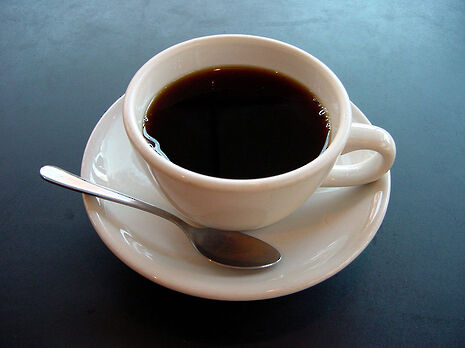
To bean or not to bean? Cambridge’s love affair with caffeine
We should take time to enjoy the delights of the Cambridge coffee scene, argues Annabel van Daalen

I’m not sure at which point coffee became synonymous with caffeine, but the stimulant seems to be the only attraction when it comes to the Cantab’s drink of choice.
In fact, caffeine dominates our drinkdialogue. As I sip my espresso, I’m forever asked the pseudo-rhetorical question: ‘You know there’s more caffeine in tea, right?’ Sigh. What hurts me the most about comments such as these is not their lack of validity, but rather that people assume I’m drinking my cortado purely for the stimulatory benefits. Yet for those of you out there who care for technicalities, I’ll hasten to clarify: yes, weight for weight, a pound of tea leaves does contain more caffeine than a pound of coffee beans. But if we nuance this, there is, on the contrary, more caffeine in a cup of coffee than a cup of tea.
And since when did coffee become a drug anyway? Coffee was never intended to help you burn the midnight oil, cure your hangover, nor help you write a vaguely satirical article for Varsity two hours after it was due. Coffee culture was born in the English coffeehouses of the 17th and 18th Centuries which, according to historian Brian Cowan, were "places where people gathered to drink coffee, learn the news of the day, and perhaps meet with other local residents and discuss matters of mutual concern". Ah, how civilised. It was once the facilitation of intellectual stimulation, and not physiological stimulation, which was coffee’s greatest attraction.
Yet gone are the days when admittance to a coffeehouse would cost you a penny. Today, our coffee addiction comes at a high price: it’s around £2.60 for a regular cappuccino at most high-street coffee shops. If you’re having a coffee a day, that’s £18 a week, which amounts to a painful £72 a month; I’ll spare you the annual calculation.
Indeed, it would appear even the University itself is endorsing this shameless coffee consumerism. You can purchase a Cambridge coffee cup at nearly every café at Sidgwick, and these ghastly mugs are visually polluting our otherwise scenic libraries (unless you’re in the Seeley).
Coffee has become a consumer product not only due to its addictive qualities, but also because it now qualifies as a fashion item. Replacing our practical, insulated thermos flasks are shelves upon shelves of cups so huge that I’m tempted to buy one to use as a crabbing bucket. I’m sorry to break it to you, but your Kate Spade thermos-bucket is not as insulating as it looks. That heat is escaping your Kate Spade thermos-bucket .
Yet it doesn’t have to be this way.
"A skinny chai latte is simply not a coffee"
Take advantage of the Cambridge coffee scene properly: Sticky Beaks and Savino’s are personal favourites, and college cafés are generally not too shabby either. Moreover, Cambridge is home to the infamous Political Coffee. If you’re a Union hack planning world-domination, what better way to do so than over a macchiato?
You might think I’m a coffee snob, and, admittedly, I would be the first one to point out that espresso is meant for breakfast, not for after lunch. Neither should a cappuccino be served in a sea of milk, as seems to be the case in Starbucks and Costa. And if you take anything from this article at all, of uttermost importance is the fact that a skinny chai latte is simply not a coffee.
And anyway, by thinking more carefully about your coffee choices, you’re more likely to end up spending your hard-earned cash on quality beans, rather than handing it to a dubious tax-dodging coffee company. But perhaps that, too, is up for debate. Over a freshly-brewed cup, of course
